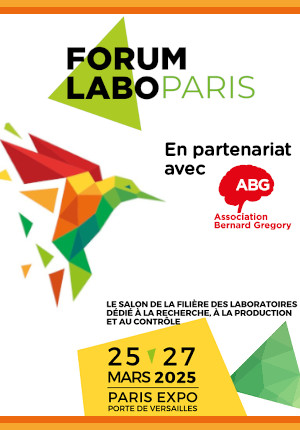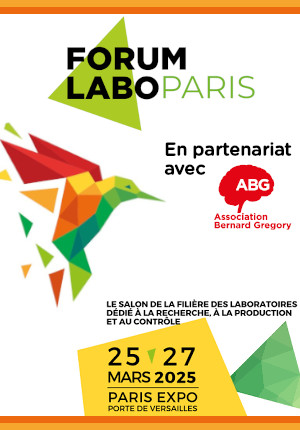Métasurface pour la récupération d'énergie électromagnétique // Electromagnetic energy scavenging by a metasurface
|
ABG-128453
ADUM-61471 |
Thesis topic | |
| 2025-02-11 |
Université de Lille
Villeneuve d'Ascq - France
Métasurface pour la récupération d'énergie électromagnétique // Electromagnetic energy scavenging by a metasurface
- Computer science
Energie Electromagnétique, Métamatériaux, Métasurface, Antenne rectifiée, Antenne
Electromagnetic Energy, Metamaterials, Metasurface, Rectenna, Antenna
Electromagnetic Energy, Metamaterials, Metasurface, Rectenna, Antenna
Topic description
L'objectif de la thèse est de développer un système de récupération d'énergie électromagnétique dans les bandes ISM 2.4 et 5.8 GHz constitué par une métasurface rectifiée de taille réduite. La thèse comportera une phase de simulation sur des logiciels commerciaux (HFSS, CST) pour dimensionner les métasurfaces rectifiées, leurs fabrications par PCB sur substrat rigide, et enfin la caractérisation de leurs performances (spectre fréquentiel, plage de puissance de fonctionnement, rendement de conversion). Une métasurface est composée d'un réseau de motifs métalliques de taille inférieure à la longueur d'onde dont la géométrie et la taille modifient la réponse fréquentielle. Les simulations auront pour objectif d'une part de définir la géométrie des motifs des métasurfaces à fabriquer permettant de miniaturiser la taille du dispositif de collecte d'énergie, et d'autre part de définir la position optimale des composants de redressement et de filtrage intégrés dans chaque cellule élémentaire afin d'obtenir un rendement de conversion maximal. Dans cette phase de conception, l'insensibilité de la réponse de la métasurface à la polarisation de l'onde sera aussi étudiée pour améliorer le rendement du dispositif de collecte d'énergie. Dans ce but, des structures multicouches seront particulièrement envisagées. Les métasurfaces seront fabriquées dans la plateforme C2EM de l'IEMN par gravure laser d'un PCB à faibles pertes. Les métasurfaces fabriquées seront caractérisées dans les plateformes CHOP et C2EM de l'IEMN selon les caractérisations envisagées. Les principales caractérisations porteront notamment sur la réponse fréquentielle de la métasurface rectifiée, sur l'adaptation d'impédance de la métasurface rectifiée à une charge résistive, et sur sa réponse en fonction de la puissance de l'onde incidente. Un calibrage spécifique du banc de mesure placé dans une chambre anéchoïque sera utilisé afin d'obtenir des résultats expérimentaux pertinents et exploitables. Enfin, un circuit simple de gestion d'énergie pourra être introduit en fin de thèse afin de caractériser les performances des métasurfaces dans un environnement réel d'utilisation. Pour cela, l'énergie issue d'une borne WiFi et collectée par les métasurfaces sera évaluée en fonction du niveau d'utilisation de la borne (débit des communications établies via la borne).
------------------------------------------------------------------------------------------------------------------------------------------------------------------------
------------------------------------------------------------------------------------------------------------------------------------------------------------------------
The objective of the thesis is to develop an electromagnetic energy harvesting system in the 2.4 and 5.8 GHz ISM bands consisting of a small-sized rectified metasurface. The thesis will include a simulation step on commercial software (HFSS, CST) in order to design rectified metasurfaces, their fabrication by PCB on rigid substrate, and finally the characterization of their performances (frequency spectrum, operating power range, conversion efficiency). A metasurface is composed of an array of metallic patterns smaller than the wavelength whose geometry and size modify the frequency response. On one hand, the simulations will aim to define the pattern geometry of the metasurfaces to be manufactured allowing to miniaturize the size of the energy harvesting device. On the other hand, it will aim to define the optimal position of the rectification and filtering components integrated in each elementary cell in order to obtain the most efficient conversion. The response insensitivity of the metasurface to the wave polarization will also be studied to improve the harvester performance. For this purpose, multilayer structures will be particularly considered. Finally, the metasurfaces will be manufactured in the platform C2EM at IEMN by laser etching of a low-loss PCB and characterized both in the CHOP and C2EM platforms at IEMN according to the targeted characterizations.
------------------------------------------------------------------------------------------------------------------------------------------------------------------------
------------------------------------------------------------------------------------------------------------------------------------------------------------------------
Début de la thèse : 01/10/2025
------------------------------------------------------------------------------------------------------------------------------------------------------------------------
------------------------------------------------------------------------------------------------------------------------------------------------------------------------
The objective of the thesis is to develop an electromagnetic energy harvesting system in the 2.4 and 5.8 GHz ISM bands consisting of a small-sized rectified metasurface. The thesis will include a simulation step on commercial software (HFSS, CST) in order to design rectified metasurfaces, their fabrication by PCB on rigid substrate, and finally the characterization of their performances (frequency spectrum, operating power range, conversion efficiency). A metasurface is composed of an array of metallic patterns smaller than the wavelength whose geometry and size modify the frequency response. On one hand, the simulations will aim to define the pattern geometry of the metasurfaces to be manufactured allowing to miniaturize the size of the energy harvesting device. On the other hand, it will aim to define the optimal position of the rectification and filtering components integrated in each elementary cell in order to obtain the most efficient conversion. The response insensitivity of the metasurface to the wave polarization will also be studied to improve the harvester performance. For this purpose, multilayer structures will be particularly considered. Finally, the metasurfaces will be manufactured in the platform C2EM at IEMN by laser etching of a low-loss PCB and characterized both in the CHOP and C2EM platforms at IEMN according to the targeted characterizations.
------------------------------------------------------------------------------------------------------------------------------------------------------------------------
------------------------------------------------------------------------------------------------------------------------------------------------------------------------
Début de la thèse : 01/10/2025
Funding category
Funding further details
Financement d'un établissement public Français
Presentation of host institution and host laboratory
Université de Lille
Institution awarding doctoral degree
Université de Lille
Graduate school
632 ENGSYS Sciences de l'ingénierie et des systèmes
Candidate's profile
Master 2 ou Ingénieur dans la spécialité électronique ou physique appliquée.
Connaissance de l'électromagnétisme et des microondes demandée.
Intérêt pour la théorie et l'expérience nécessaire.
Master's degree in Electronics or applied Physics. Knowledge in electromagnetisms and microwaves required. Interest for theory and experiments required.
Master's degree in Electronics or applied Physics. Knowledge in electromagnetisms and microwaves required. Interest for theory and experiments required.
2025-04-21
Apply
Close
Vous avez déjà un compte ?
Nouvel utilisateur ?
More information about ABG?
Get ABG’s monthly newsletters including news, job offers, grants & fellowships and a selection of relevant events…
Discover our members
 CESI
CESI  ANRT
ANRT  ONERA - The French Aerospace Lab
ONERA - The French Aerospace Lab  Institut Sup'biotech de Paris
Institut Sup'biotech de Paris  Laboratoire National de Métrologie et d'Essais - LNE
Laboratoire National de Métrologie et d'Essais - LNE  SUEZ
SUEZ  MabDesign
MabDesign  Groupe AFNOR - Association française de normalisation
Groupe AFNOR - Association française de normalisation  Généthon
Généthon  TotalEnergies
TotalEnergies  PhDOOC
PhDOOC  Aérocentre, Pôle d'excellence régional
Aérocentre, Pôle d'excellence régional  CASDEN
CASDEN  MabDesign
MabDesign  Institut de Radioprotection et de Sureté Nucléaire - IRSN - Siège
Institut de Radioprotection et de Sureté Nucléaire - IRSN - Siège  Tecknowmetrix
Tecknowmetrix  Nokia Bell Labs France
Nokia Bell Labs France  Ifremer
Ifremer  ADEME
ADEME










